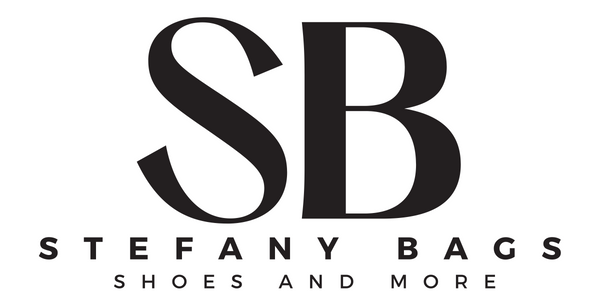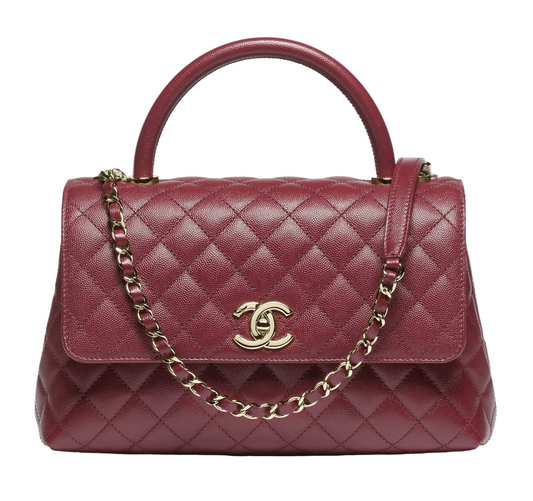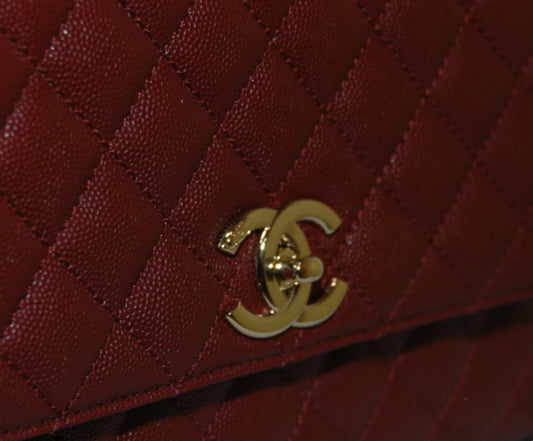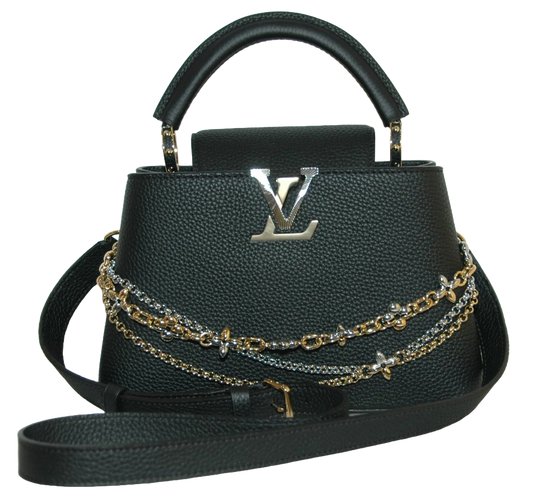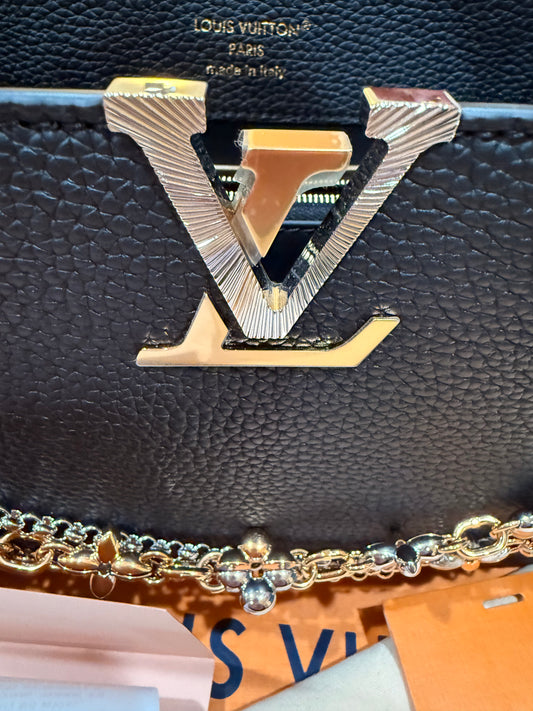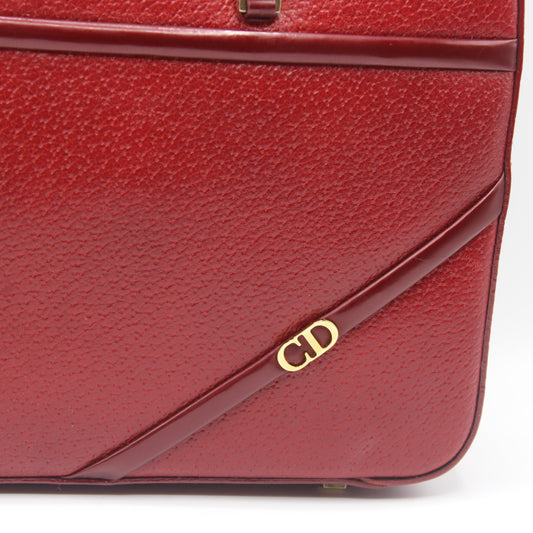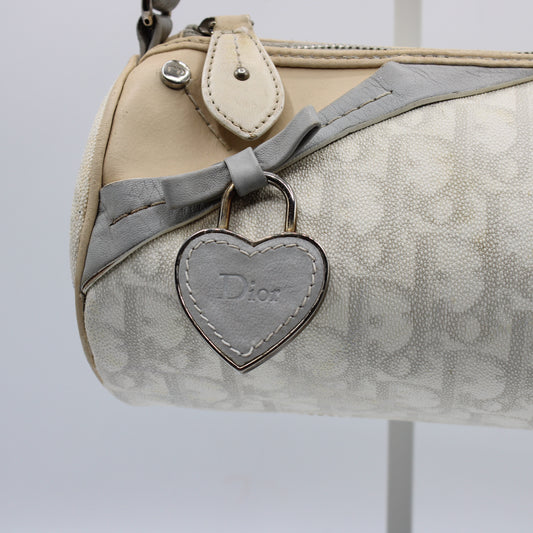
Luxury's Shadow: The Battle Against Louis Vuitton Counterfeits
Stefany Bags Shoes and MoreShare
Introduction to Louis Vuitton's Legacy
In the world of luxury fashion, few names evoke the prestige and allure of Louis Vuitton. Founded in 1854 by the eponymous designer, Louis Vuitton started as a trunk-maker in Paris. The brand quickly became synonymous with luxury travel goods, revolutionizing luggage with its iconic flat trunks. These trunks, durable and elegant, were a far cry from the bulky and impractical travel chests of the time.
The introduction of the LV Monogram Canvas in 1896 was a landmark moment. This pattern, featuring the now-iconic LV initials interspersed with floral motifs, became a status symbol for the wealthy elite. As the 20th century progressed, Louis Vuitton expanded its offerings to include handbags, wallets, and other leather goods, each bearing the distinctive LV monogram.
Louis Vuitton's commitment to craftsmanship and quality, combined with its innovative designs, cemented its status at the forefront of the fashion industry. The brand's ability to blend tradition with modernity made it a favorite among celebrities and fashion enthusiasts alike. From the streets of Paris to the red carpets of Hollywood, Louis Vuitton's items were, and remain, a symbol of luxury, style, and exclusivity.
As Louis Vuitton grew into a global fashion powerhouse, its popularity made it a target for counterfeiters. The widespread imitation of LV products not only posed a challenge to the brand's exclusivity but also sparked a complex battle against the counterfeit market - a battle that would test the very principles upon which the House of Louis Vuitton was built.
The Rise of Counterfeits
The allure of Louis Vuitton has not only captivated genuine fashion aficionados but also given rise to a sprawling counterfeit industry. The brand's ascent as a symbol of wealth and status has made its products prime targets for imitation. This section of the article delves into the growth of the counterfeit market for luxury bags, with a specific focus on Louis Vuitton.
The counterfeit industry has burgeoned into a multibillion-dollar shadow economy, feeding off the desirability of luxury brands like Louis Vuitton. High demand for these prestigious items, combined with their often-prohibitive costs, creates a fertile ground for counterfeiters. These illegitimate producers exploit the brand's popularity, offering knock-off versions at a fraction of the price of genuine articles.
Counterfeiting, once a practice confined to back-alley vendors and clandestine markets, has now proliferated across the globe, facilitated by the digital age. Online marketplaces and sophisticated networks have made it easier than ever to distribute fake luxury goods, blurring the lines between genuine and counterfeit products for the average consumer.
Louis Vuitton's distinct designs and patterns, especially the iconic Monogram Canvas, have become a favorite among counterfeiters. These fakes range from poorly made replicas to high-quality imitations that challenge even experts' ability to distinguish them from authentic pieces. This widespread counterfeiting not only undermines Louis Vuitton's exclusivity but also poses significant challenges in maintaining brand integrity and customer trust.
As the counterfeit market evolves, so do the methods employed by those creating fake Louis Vuitton products. They mimic the brand’s designs with alarming accuracy, making it increasingly difficult for buyers to identify authentic products. This surge in counterfeiting has significant implications, not just for Louis Vuitton, but for the luxury goods industry as a whole.
The Art of Deception: Spotting Fake Louis Vuitton
The challenge of distinguishing between authentic and counterfeit Louis Vuitton products is a complex art form, one that even seasoned experts find demanding. Counterfeiters have honed their craft to an extent where fake Louis Vuitton items often mirror the quality and appearance of the real ones, making detection increasingly challenging.
Authenticating a genuine Louis Vuitton product involves a meticulous examination of several key elements. Firstly, the quality of materials is a telltale sign. Authentic Louis Vuitton bags are crafted from high-quality materials such as durable canvas and fine leather, with a level of craftsmanship that is difficult to replicate. The stitching on genuine bags is even, precise, and without any loose threads.
Another crucial aspect is the brand's distinctive monogram. Each pattern on an authentic Louis Vuitton item is carefully aligned and symmetrical. Counterfeits often have misaligned patterns, incorrect color shades, or distorted logos. Additionally, authentic Louis Vuitton products feature specific hardware details, like zippers, clasps, and locks, which are of superior quality and often have unique brand-specific designs.
The inside of the bag also holds clues. Authentic Louis Vuitton bags typically have a serial number and a distinct font used for any printed text. Counterfeits may overlook these finer details or execute them poorly.
Despite these authentication methods, the sophistication of modern counterfeits poses a significant challenge. High-quality fakes, or 'super fakes,' can be so well-made that they require professional authentication services to confirm their legitimacy. This difficulty highlights the evolving nature of the counterfeit market and the continuous effort required by both Louis Vuitton and its customers to safeguard against deception.
Economic and Brand Implications
The economic impact of counterfeiting on brands like Louis Vuitton is substantial. In 2022, the global value of counterfeit goods was estimated to be around $3 trillion, with luxury goods accounting for a significant portion. This vast counterfeit market directly affects Louis Vuitton, leading to significant financial losses and undermining its reputation.
Counterfeiting not only diverts potential revenue but also devalues the brand's exclusivity, an essential component of its appeal in the luxury market. While quantifying the exact financial impact on Louis Vuitton is challenging, the scale of the problem is evident in the billions lost industry-wide due to counterfeits. These losses encompass direct sales and long-term damage to brand equity and customer trust.
Moreover, Louis Vuitton invests heavily in combating counterfeiting, including legal actions and the development of anti-counterfeiting technologies. These efforts, while critical for brand protection, add to the overall economic burden.
The presence of counterfeit products in the market also erodes consumer confidence. The uncertainty over authenticity can discourage potential buyers, who may fear the risk of inadvertently purchasing a fake item. This erosion of trust is particularly damaging for a brand that prides itself on quality and authenticity.
Battling the Fakes: Louis Vuitton's Response
Louis Vuitton has been at the forefront of the fight against counterfeiting, employing a multi-faceted approach to protect its brand and products. The company's strategy includes legal action, technological innovation, and consumer education to combat the proliferation of fake goods.
Legally, Louis Vuitton aggressively pursues counterfeiters through litigation and collaboration with law enforcement agencies worldwide. These efforts have resulted in numerous raids, seizures of counterfeit goods, and legal victories, sending a strong message to those involved in the counterfeit market.
Technologically, Louis Vuitton has incorporated advanced anti-counterfeiting measures into its products. For instance, the brand embeds RFID (Radio-Frequency Identification) tags in its products, enabling authentication and tracking. Additionally, Louis Vuitton uses hologram stickers with unique serial numbers linked to a database to verify the authenticity of its products. These technological interventions make it increasingly difficult for counterfeiters to produce convincing fakes.
Furthermore, the brand actively educates its customers about the dangers of counterfeiting. Through its website, campaigns, and store personnel, Louis Vuitton provides information on how to identify authentic products and the importance of purchasing from authorized retailers.
Looking Ahead: The Future of Luxury Authenticity
As Louis Vuitton continues to battle the counterfeit market, the future of luxury authenticity hinges on both technological innovation and consumer awareness. The evolution of anti-counterfeiting technologies, such as advanced RFID tags, holograms, and microprinting, is crucial in this fight. These technologies not only make it more challenging to produce convincing fakes but also enable easier verification of authenticity by consumers and experts alike.
Looking forward, the integration of digital solutions, like blockchain and AI, into the authentication process is a promising development. These technologies could provide a more secure and transparent way to track the provenance and authenticity of luxury items, making counterfeiting even more difficult.
Consumer education remains a critical component. As buyers become more informed about the risks of counterfeits and the importance of purchasing from legitimate sources, the demand for fake items is likely to decrease. This awareness, combined with a preference for authentic products, will play a significant role in curbing the counterfeit market.
The future of luxury goods, particularly for brands like Louis Vuitton, lies in the balance of maintaining traditional craftsmanship while embracing modern technological advancements. This equilibrium is essential not just for ensuring authenticity but also for sustaining the brand's legacy in an ever-evolving fashion landscape.
Conclusion
In conclusion, the challenge of counterfeiting in the luxury goods market, exemplified by Louis Vuitton, is a multifaceted issue that continues to evolve. The sophistication of counterfeit products has reached a point where even experienced professionals, including store employees of luxury brands, sometimes face difficulties in distinguishing fake items from genuine ones. This situation underscores the necessity for continuous advancement in authentication techniques and consumer education.
Louis Vuitton's proactive approach, combining legal action, technological innovation, and consumer outreach, sets a precedent in the luxury industry's battle against counterfeits. However, the fight is far from over. The future will demand even more sophisticated solutions and a collective effort from brands, consumers, and authorities to preserve the integrity and value of luxury items.
As we navigate this complex landscape, the importance of authenticity and the preservation of craftsmanship remain paramount. Louis Vuitton's ongoing struggle against counterfeits is not just about protecting a brand; it's about upholding the values of quality, craftsmanship, and trust that define the luxury market.
© 2024 Stefany Bags Shoes and More
